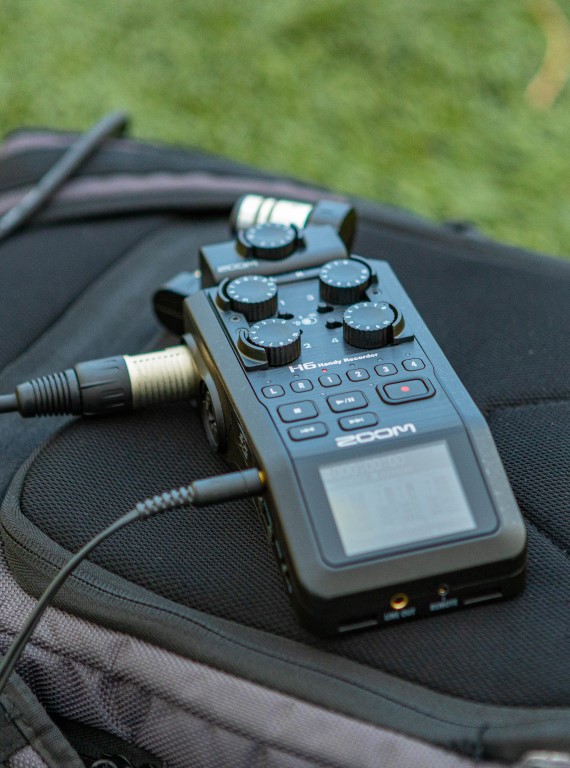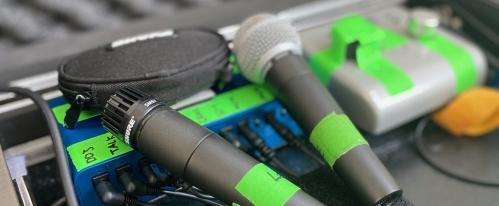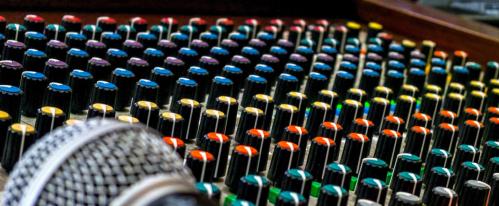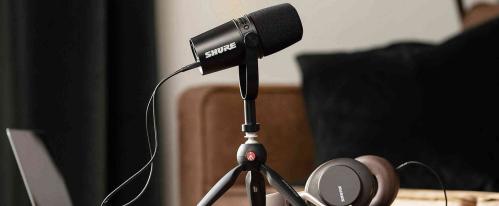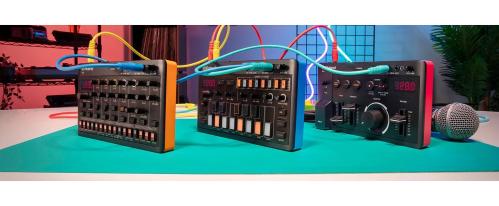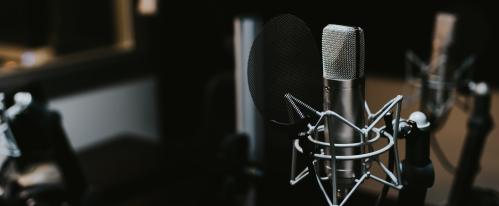What is a field recording? Find out how to make field recordings and explore using field recordings in music with our guide to field recording for beginners
Field recording can seem like a perplexing subject. Whether you want to learn about the history of the artform or you’re searching for a field recorder for sampling natural sounds into your music - we’re here to help you become an expert on the subject!
Some of the PMTV crew spent the day with Hayley Suviste to find out more about field recording - check it out below and keep reading for some more of our favourite gear, tricks, and techniques for adding field recordings to your music..
What is a Field Recording?
A field recording is any recording that takes place outside of a typical recording studio environment. The definition includes both natural and man-made sounds, in addition to sound recordings that take advantage of vibrations or electromagnetic fields.
There are a great variety of ways you can record and create field recordings - so keep reading for our best field recording tips!
How to Make Field Recordings
Making basic field recordings is really simple - the challenge is in finding the right sounds.
Here we’ll look at some commonly recorded sounds, techniques you can implement, and how you can add them to your music for various effects.
If you’re looking for the best field recording gear, scroll down to read about our Expert recommendations..
How to Use a Field Recorder
There are no special rules or requirements for making field recordings. The main challenge you will have to overcome is finding a way to isolate the noise you want to record, and capturing it as clearly as possible.
No matter what gear you’re using, it’s important to represent the sound as accurately as possible. This means that accessories such as shock mounts and windscreens can come in especially useful! They help with minimising the additional noises out in the world that are drowning out your perfect samples.
Just as you’d do when mic’ing up an instrument or a voice, point the mic at your subject - whether it be running water, the hum of traffic, or a passing train - and adjust the sensitivity accordingly until you have a healthy level.
Try positioning your microphone in a variety of ways, and come up with some different variations of the sound if possible. You’ll be able to refine the sound at the production stage if necessary and EQ out any unwanted noises, so it helps if you have access to some different versions of the recording to choose from.
There are different bits of gear and stereo mic’ing techniques which you can take advantage of to help with capturing the perfect sounds:
- A/B
- XY
- M/S
A/B uses a spaced pair of microphones that are in parallel with each other, capturing a wide stereo image.
XY is the most popular technique, which involves using complementary microphones in a coincident pattern. It’s best for collecting sounds in a way that best replicates how our ears hear them.
M/S is similar to XY, but allows control over the ambiance of your recordings. It involves using a directional microphone at the midpoint of your set-up, in addition to an omnidirectional mic placed 90-degrees off-axis to your sound.
There are also newer techniques in field recording which involve the use of hydrophones (for recording underwater!) and contact mics, which are great for detecting vibrations and turning them into sound.
Using Field Recordings in Music
Field recordings in music can have a fascinating effect on the listener’s experience.
Pioneered by Pierre Schaeffer, field recordings can allow artists to capture a sense of ‘place’ in their music.
Notable examples of this include Björk’s use of samples on ‘Utopia’ to personify her native Iceland’s surroundings, as well as the 2016 release of ‘Street Politician’ by Novelist to evoke images of modern London and city life.
Field Recording Equipment

Good news - you don’t need a huge budget to get started with field recording! Many musicians and producers nowadays are taking on field recording with iPhone and mobile set-ups, which offer awesome levels of flexibility and versatility as a portable rig. Using the standard Voice Memos app is the most simple way to get started, but apps such as GarageBand can double-up as a production tool and field recorder for iPhone. As a field recorder for sampling, simple tools on your phone can be great for grabbing sounds as soon as inspiration strikes.
If you want a standalone field recorder on a budget, we recommend the Zoom Handheld Series.
These mics are great for taking out to different locations - they’re built to last, and allow you to capture high-fidelity sounds from any number of locations.
Check out the full range here:
You can also take out an audio interface and a range of microphones to capture sounds. Our favourite interfaces come from Trumix Audio. They do the basics right, and for a field set-up you won’t want to break the bank so they fit the bill perfectly.
Find our range of Trumix interfaces here:
You can also find the staggering selection of microphones available at PMT below. Condensers, Dynamic mics, and Ribbon options will all pick up field sounds differently, with strengths and weaknesses for each.
Experiment with different set-ups and add some fresh sounds to your library!
Final Thoughts
Field recording can be a great way to inject some life into your audio productions.
Whether you’re creating experimental soundscapes or writing hyperpop hits, there’s always space for the sounds around you to feature.
Try it out today!
Want to find out about the latest Studio and Recording gear at PMT? Call us on 0151 448 2089 or check out your local store to speak to one of our Experts about your needs.

